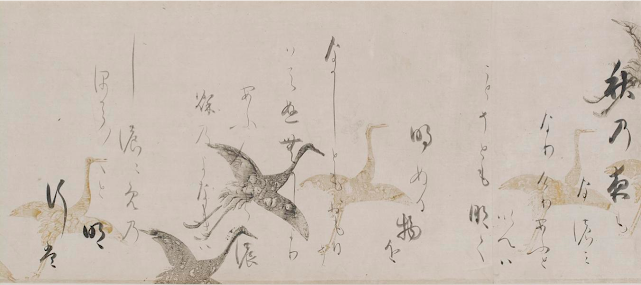Japanese Edo Exhibit

Japan's Edo period has been referred to as their "early-modern" era in the arts. Edo, a city in Japan, which is now modern day Tokyo, was the center of the blossoming art style. While Edo period is a categorical time for the art style, due to the diversity and length of this period, there are multiple sub-periods. The Edo period spanned from 1615-1868. This was largely due to the ruling in Japan bringing prosperity and peace for the people. This is reflected in much of the art being produced during this time. Above is a collaboration art work titled Poems from the Kokin wakashū by two prominent artists, Tawaraya Sōtatsu and Hon’ami Kōetsu. This work is a handscroll created on paper, with ink, gold, silver, and mica. Tawaraya Sōtatsu was a painter and contributed to the painting in this piece, and Hon’ami Kōetsu was a calligrapher and ceramist. The painting/calligraphy/poem is an important aspect of the Edo period, as this was when there was an increase in visual

